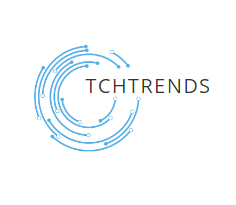Polypropylene (PP) nourishment holders have ended up omnipresent in advanced nourishment bundling, advertising a flexible and cost-effective arrangement for putting away, transporting, and serving a wide assortment of nourishment things. From takeout suppers and shop things to microwaveable dishes and servings of mixed greens holders, pp food container are prized for their solidness, flexibility, and comfort. In this article, we investigate the advancement, properties, benefits, and supportability contemplations of PP nourishment holders, shedding light on their urgent part within the nourishment bundling industry.
Polypropylene, a thermoplastic polymer inferred from propylene monomers, was, to begin with, synthesized in the 1950s and has since become one of the foremost broadly utilized plastics in the world. Its notoriety stems from its fabulous combination of properties, including tall pliable quality, chemical resistance, warm resistance, and clarity. These traits make PP a perfect fabric for a wide range of applications, including nourishment bundling, car components, buyer products, and therapeutic gadgets.
Within the domain of nourishment bundling, PP nourishment holders have risen as a favored choice for both producers and buyers alike. These holders are accessible in different shapes, sizes, and setups to suit distinctive nourishment items and serving needs. From circular store holders and rectangular supper plates to hinged-lid clamshells and parcel mugs, PP nourishment holders offer flexibility and usefulness for a wide extend of food service applications.
One of the key benefits of PP nourishment holders is their solidness and resistance to mechanical push and effect. Not at all like other sorts of nourishment bundling materials such as polystyrene (PS) or polyethylene terephthalate (PET), PP holders are less inclined to split, break, or shatter, making them reasonable for use in high-traffic situations such as eateries, cafeterias, and catering administrations. Moreover, PP holders are microwave-safe and can withstand a wide run of temperatures, making them appropriate for reheating or putting away hot and cold nourishments.
In addition, PP nourishment holders offer amazing boundary properties against dampness, oil, and oxygen, making a difference in protecting the freshness and flavor of bundled nourishments. This obstruction assurance makes a difference amplify the rack life of perishable nourishment things and diminishes the hazard of deterioration or contamination during capacity and transportation. Furthermore, PP holders are safe from oils, acids, and other nourishment fixings, making them appropriate for a wide extend of nourishment items, including sauces, dressings, and acidic nourishments.
In later a long time, supportability has developed as a key thought within the plan and generation of nourishment bundling materials. PP nourishment holders offer a few maintainability points of interest compared to other bundling materials, counting recyclability, reusability, and lightweight development. PP is broadly acknowledged for reusing in numerous civil reusing programs, permitting utilized holders to be collected, processed, and reused within the generation of modern plastic items. Moreover, PP holders can be washed and reused at different times, decreasing the need for single-use bundling and minimizing the squandering era.
Besides, progress in polymer innovation has driven to the development of bio-based and compostable PP materials, advertising environmentally friendly options to conventional petroleum-based plastics. Bio-based PP is inferred from renewable assets such as sugarcane or corn, whereas compostable PP is outlined to break down into natural matter beneath controlled composting conditions. These economical PP materials offer the same execution and functionality as customary PP, with the included advantage of decreasing dependence on fossil fills and relieving the natural effect of plastic squandering.
Despite their various benefits, PP nourishment holders are not without impediments. Whereas PP is for the most part considered secure for nourishment contact and has been endorsed by administrative offices such as the U.S. Nourishment and Sedate Organization (FDA) and the European Nourishment Security Specialist (EFSA), concerns have been raised around the potential movement of chemicals from PP into nourishment beneath certain conditions. To relieve these dangers, producers must follow strict controls and rules for the generation and utilization of PP nourishment holders, guaranteeing that they meet stringent security and quality benchmarks.
In conclusion, PP nourishment holders have become crucial within the nourishment bundling industry, advertising a versatile, durable, and cost-effective arrangement for putting away, transporting, and serving a wide extend of nourishment items. With their excellent barrier properties, warm resistance, and maintainability focal points, PP containers play a significant part in preserving the freshness and quality of bundled nourishments while minimizing natural effects. As the request for helpful and feasible nourishment bundling proceeds to develop, PP nourishment holders are balanced to remain a staple within the industry for a long time to come.

